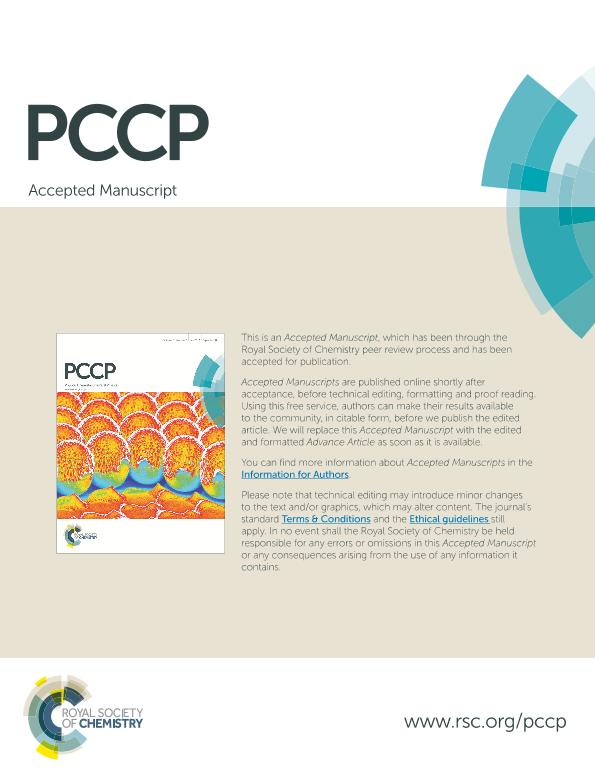Mostrar el registro sencillo del ítem
dc.contributor.author
Lopez Cascales, J. J.
dc.contributor.author
Garro, Adriana

dc.contributor.author
Porasso, Rodolfo Daniel

dc.contributor.author
Enriz, Ricardo Daniel

dc.date.available
2016-05-24T15:32:30Z
dc.date.issued
2014-09
dc.identifier.citation
Lopez Cascales, J. J.; Garro, Adriana; Porasso, Rodolfo Daniel; Enriz, Ricardo Daniel; The dynamic action mechanism of small cationic antimicrobial peptides; Royal Society Of Chemistry; Physical Chemistry Chemical Physics; 16; 39; 9-2014; 21694-21705
dc.identifier.issn
1463-9076
dc.identifier.uri
http://hdl.handle.net/11336/5808
dc.description.abstract
Antimicrobial peptides form part of the immune system as protection against the action of external pathogens. The differences that exist between mammalian and microbial cell membrane architectures<br />are key aspects of the ability of these peptides to discriminate between pathogens and host cells. Given that the pathogen membrane is the non-specific target of these cationic peptides, different molecular<br />mechanisms have been suggested to describe the rules that permit them to distinguish between pathogens and mammalian cells. In this context, and setting aside the old fashion idea that cationic peptides act through one mechanism alone, this work will provide insight into the molecular action mechanism of small antimicrobial peptides, based on molecular dynamics simulations of phospholipid bilayers that mimic different cell membrane architectures. After measuring different properties of these<br />lipid bilayers, in the absence and presence of peptides, a four-step action mechanism was suggested on the basis of the formation of phospholipid rafts induced by the presence of these cationic peptides. Thus, this work shows how differences in the bending modulus (k b ) of these lipid rafts and differences in the free energy profiles (DG(z)) associated with the insertion of these peptides into these lipid rafts are key aspects for explaining the action mechanism of these cationic peptides at the molecular level.
dc.format
application/pdf
dc.language.iso
eng
dc.publisher
Royal Society Of Chemistry

dc.rights
info:eu-repo/semantics/openAccess
dc.rights.uri
https://creativecommons.org/licenses/by-nc-sa/2.5/ar/
dc.subject
Cationic Peptides
dc.subject
Membranes
dc.subject
Molecular Dynamics
dc.subject.classification
Físico-Química, Ciencia de los Polímeros, Electroquímica

dc.subject.classification
Ciencias Químicas

dc.subject.classification
CIENCIAS NATURALES Y EXACTAS

dc.title
The dynamic action mechanism of small cationic antimicrobial peptides
dc.type
info:eu-repo/semantics/article
dc.type
info:ar-repo/semantics/artículo
dc.type
info:eu-repo/semantics/publishedVersion
dc.date.updated
2016-05-16T20:08:16Z
dc.journal.volume
16
dc.journal.number
39
dc.journal.pagination
21694-21705
dc.journal.pais
Reino Unido

dc.journal.ciudad
Cambridge
dc.description.fil
Fil: Lopez Cascales, J. J.. Universidad Politecnica de Cartagena; España
dc.description.fil
Fil: Garro, Adriana. Universidad Politecnica de Cartagena; España. Consejo Nacional de Investigaciones Científicas y Técnicas. Centro Científico Tecnológico San Luis. Instituto Multidisciplinario de Investigaciones Biológicas de San Luis; Argentina
dc.description.fil
Fil: Porasso, Rodolfo Daniel. Consejo Nacional de Investigaciones Científicas y Técnicas. Centro Científico Tecnológico San Luis. Instituto de Matemática Aplicada de San Luis; Argentina
dc.description.fil
Fil: Enriz, Ricardo Daniel. Universidad Politecnica de Cartagena; España. Consejo Nacional de Investigaciones Científicas y Técnicas. Centro Científico Tecnológico San Luis. Instituto Multidisciplinario de Investigaciones Biológicas de San Luis; Argentina
dc.journal.title
Physical Chemistry Chemical Physics

dc.relation.alternativeid
info:eu-repo/semantics/altIdentifier/url/http://pubs.rsc.org/en/Content/ArticleLanding/2014/CP/c4cp02537g
dc.relation.alternativeid
info:eu-repo/semantics/altIdentifier/doi/http://dx.doi.org/10.1039/C4CP02537G
Archivos asociados
